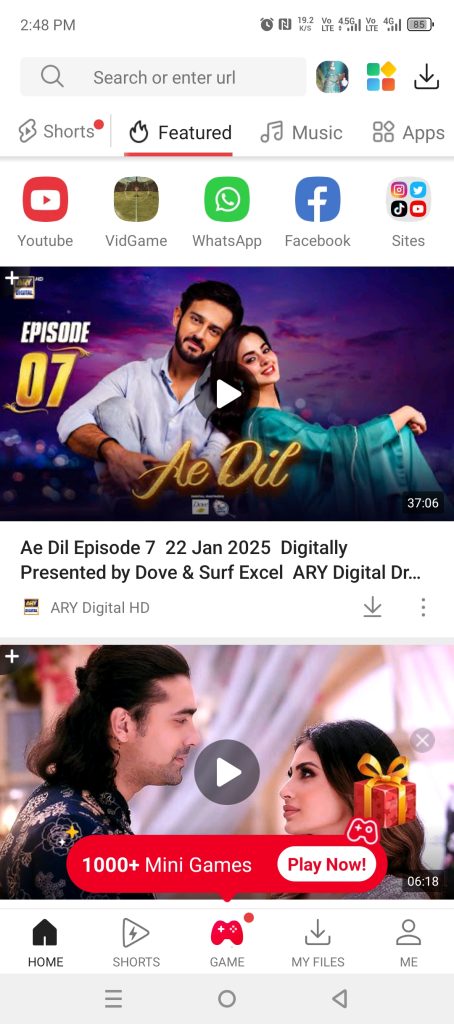Vidmate 2015
Vidmate 2015 emerged as one of the most popular third-party video downloading applications during the mid-2010s, with its 2015 version representing a significant milestone in its development. This application gained widespread popularity, particularly in regions with limited internet connectivity or expensive data plans, by allowing users to download videos from various platforms for offline viewing.
Origins and Development
VidMate old version 2015 was developed by Alibaba subsidiary UCWeb, the same company behind UC Browser. The 2015 version of VidMate represented a significant evolution from its earlier iterations, incorporating more features and supporting a wider range of video hosting platforms.
VidMate 2015: A Milestone in Digital Content Accessibility and Infrastructure Awareness
Though subsequent years would bring increased scrutiny of such applications from both legal and security perspectives, VidMate 2015 remains noteworthy for its role in democratizing access to digital video content and highlighting the importance of considering diverse internet infrastructure conditions when designing content delivery systems.
The legacy of VidMate 2015 can still be seen in many of today’s official applications that now incorporate download options, quality settings, and data-saving features—acknowledging that even in an increasingly connected world, the ability to access content offline remains valuable to many users.

Key Features of VidMate 2015
The 2015 version of VidMate 2015 expanded its compatibility to include downloads from numerous popular platforms, including:
Multi-Platform Support
- YouTube
- 123 movies
- Dailymotion
- Vimeo
- Hotstar (particularly popular in India)
- Various regional video platforms
Video Quality Options
One of the standout features of VidMate 2015 was its ability to offer users multiple quality options for downloads:
- Low quality (144p, for users with severe bandwidth constraints)
- Medium quality (360p, 480p)—balancing quality and file size
- High quality (720p, for users prioritizing viewing experience)
User Interface
The 2015 version featured a relatively simple but functional interface with:
- A search bar at the top
- Category sections for browsing content
- Recently downloaded section
- Trending videos section
- Download manager showing progress and completed downloads
Download Management Interface
vidmate app 2015 offered several useful download management features
- Background downloading
- Pause and resume functionality
- Download queue management
- Automatic retry for failed downloads
- Speed limiting options
Additional Features
Beyond video downloading, VidMate 2015 incorporated several other functions:
- Built-in video player
- Music downloading capabilities
- Live TV streaming options (in some regions)
- Ringtone creation from downloaded audio
Technical Aspects Installation Process
Unlike applications available through official app stores, VidMate 2015 required users to:
- Enable “Unknown Sources” in their Android security settings
- Download the APK file from third-party websites
- Manually install the application
System Requirements
The 2015 version of VidMate Download 2015 was designed to work on relatively modest hardware:
- Android 2.3 (Gingerbread) or higher
- Minimum 512MB RAM (though 1GB was recommended)
- At least 50MB of free storage space for the application itself
- Additional storage space for downloaded content
Data Compression
A notable technical feature was its data compression capability, which helped users:
- Reduce data consumption during browsing
- Preview videos before downloading
- Optimize download sizes
Market Position and User Base
By 2015, VidMate had established itself as one of the most popular video downloading applications, particularly in
- India
- Southeast Asian countries
- Parts of Africa
- Other emerging markets with limited internet infrastructure
The application’s popularity stemmed from addressing specific needs in these markets
- Intermittent internet connectivity
- Expensive mobile data
- Limited broadband penetration
- Growing smartphone adoption with limited device capabilities
Legal and Ethical Considerations
- The 2015 version of VidMate operated in a legally ambiguous space:
- Copyright Concerns
- The application enabled downloading of copyrighted content from platforms that typically didn’t allow this functionality, raising questions about
Copyright infringement
Terms of service violations for platforms like YouTube Impact on content creators’ revenue
Distribution Channels
vidmate 2015 ka was not available on the Google Play Store due to policy violations regarding
- Content downloading from other platforms
- Potential copyright infringement facilitation
- Security concerns
Privacy and Security
The 2015 version raised several privacy and security concerns
- Collection of user data beyond what was necessary for functionality
- Potential vulnerabilities in the APK distribution model
- Limited transparency about data handling practices
Impact on Digital Content Consumption
VidMate 2015 significantly influenced how users in certain markets consumed digital content. Offline Viewing Culture it helped establish a culture of offline viewing where
- Users would download content when they had access to Wi-Fi
- Videos would be stored for later viewing
- Content could be shared locally without internet access
Content Accessibility
The application democratized access to digital content in regions where
- Internet infrastructure was developing
- Data costs were prohibitively expensive
- Streaming was impractical
Alternative Revenue Models
VidMate’s popularity contributed to discussions about
- How content creators could monetize in markets where direct streaming was challenging
- The need for platforms to develop offline viewing options
- Regional pricing strategies for subscription services
Competitive Landscape in 2015
VidMate 2015 existed in a competitive ecosystem that included:
Similar Applications
- TubeMate
- SnapTube
- UC Browser (with download capabilities)
- IDM for Android
- Advanced Download Manager
Official Alternatives
By 2015, some platforms had begun responding to the demand for offline viewing:
- YouTube introduced YouTube Go (though not until later)
- Some streaming services added limited offline capabilities
- Mobile browsers enhanced their download features
Technical Limitations
Despite its popularity, 2015 ka vidmate had several limitations:
Platform Restrictions
- Functioned only on Android devices
- No iOS version due to Apple’s stricter app policies
- Limited functionality on certain Android variants
Performance Issues users often reported
- Application crashes during large downloads
- High battery consumption
- Background process management problems
- Occasional conflicts with other applications
Content Restrictions
The application struggled with:
- DRM-protected content
- Adaptive streaming formats
- Certain encryption methods
- Platform API changes
Evolution and Updates
Throughout 2015, VidMate released several updates addressing
- Bug Fixes
- Stability improvements
- Crash resolutions
- Download failure issues
Feature Enhancements
- Additional supported platforms
- Improved download speeds
- Enhanced user interface elements
- Better video categorization
Security Patches
- Addressing identified vulnerabilities
- Improving data handling
- Enhancing permission management
User Community and Support
2015 vidmate fostered a significant user community
- Unofficial Forums
- Users shared tips and troubleshooting advice
- Alternative download sources were discussed
- Feature requests were compiled
Tutorial Content
- YouTube tutorials explaining optimal usage
- Blog posts about hidden features
- Guides for maximizing download speeds
Localization Efforts
- Community-driven translations
- Regional content recommendations
- Local platform support requests
Legacy and Influence
The 2015 version of VidMate left a lasting impact on mobile content consumption
- Major platforms began recognizing the need for offline viewing options
- Data-saving features became more common in official apps
- Regional approaches to content distribution evolved
User Expectations
- Offline viewing became an expected feature
- Quality options for bandwidth management became standard
- Download managers improved across applications
Application Design
- VidMate’s interface influenced other content applications
- Its download management approach was widely emulated
- The multi-platform aggregation model became more common
CONCLUSION
The 2015 version of the VidMate app download install old version 2015 represented a significant moment in mobile content consumption, particularly for users in emerging markets. While operating in a legally gray area, it addressed genuine needs for offline content access in regions with limited connectivity and high data costs.Its popularity demonstrated the market demand for flexible content consumption options that the major platforms had not yet adequately addressed. The application’s feature set—including multi-quality downloads, background processing, and wide platform support—established expectations that would eventually influence official applications and services.

